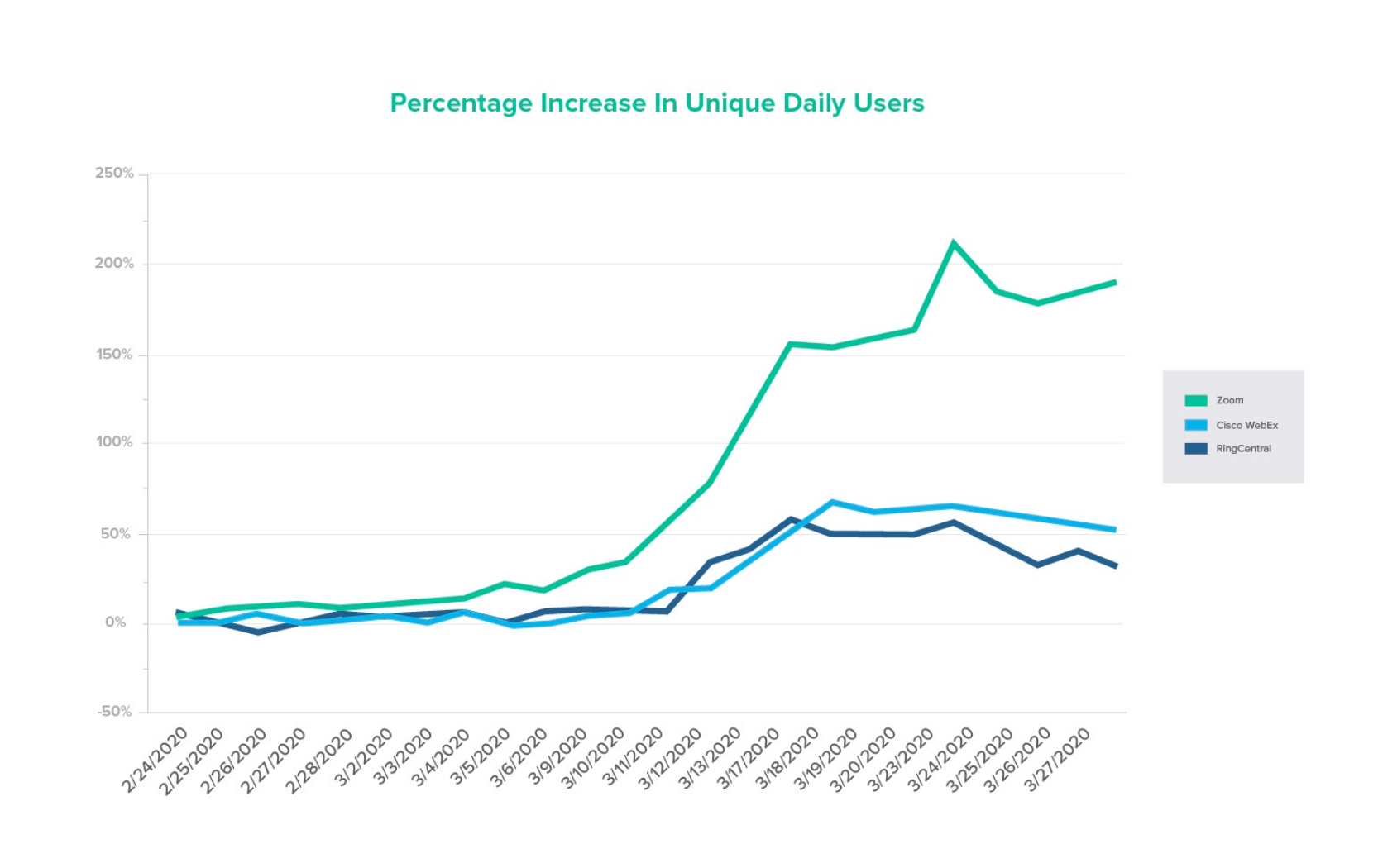How COVID-19 Is Changing the Way We Work: Zoom Boom + MFA is the Way
The COVID-19 pandemic has dramatically changed both our personal and professional lives. California, where Okta is headquartered, and many other states have implemented shelter-in-place or social distancing orders, forcing many employees to work remotely. Even when local or national governments haven’t issued guidance, many businesses have chosen to close their offices anyway. As a result, millions of people around the world are now working from home for the first time.
Although organizations around the globe have been using video conferencing for years (Skype was founded in 2003, and Zoom launched in 2011), these tools are now more essential than ever as we need new ways to stay connected to our, now remote, colleagues.
These changes made my team curious — how many companies have been ramping up their video conferencing, and when they do, what tools do they use? We looked at trends across the Okta Integration Network — a network of 6,500+ pre-built integrations to applications and infrastructure providers — which gives our team unique insight into the apps people use at work.
We collected data starting on February 28, 2020 (before most U.S. companies issued work from home directives) up until March 27, 2020. When analyzing the data, which comes from customers that leverage our products to secure their workforces, we look at two types of numbers. First: total unique user logins per day, which refers to the number of unique individuals logging into their video conferencing accounts or signing in with MFA on a given day. If I log into Zoom 4 times, for example, or sign into 8 apps with MFA, I’ll just be counted once. Second: the total number of login events, which looks at total logins across all users. So if I log into my Zoom account 4 times in one day, or sign into 8 apps with MFA, each login will be counted separately.
Here’s what we found:
We’re witnessing a Zoom boom
We found a significant leap in video conferencing usage over the past few weeks, especially with Zoom. With so many people working remotely now, this leap makes sense: more and more companies need video conferencing to conduct meetings. And people around the world are also using apps like Zoom to connect for non-work purposes, such as online classes, family catch ups, and workout classes.
On March 27, compared to February 28, Zoom, by far, saw the biggest jump in the percentage of daily unique users and events: a 191% increase in unique Zoom users and a 222% increase in total Zoom login events. Other video conferencing tools also saw an increased percentage of login events between February 28-March 27, but not quite as much: Cisco WebEx had a 68% in login events; RingCentral had a 55% increase in login events.

Of course, there have been many factors impacting the number of people using video conferencing apps over the past few weeks, but we noticed that specific moments in time, such as government-issued social distancing directives, correlated to jumps in usage. On Monday, March 16, France announced a country-wide lockdown; that same day, we saw a 95% increase in unique Zoom user logins, compared to the previous Monday. On Thursday, March 19, the day California announced a shelter-in-place directive, we saw a 50% increase in unique Zoom logins.
Companies are relying on MFA more than ever
Identity and phishing attacks related to COVID-19 are on the rise, and our customers are turning to us to protect against them. Okta Multi-Factor Authentication (MFA) allows organizations to authenticate user logins with factors like biometric identifiers (e.g., fingerprints), security questions and one-time passwords. Verifying users is critical today because doing so ensures only legitimate users can access company applications and data.
We also allow companies to set customized MFA policies based on the unique context of each login attempt. For example, a company can decide to require multiple factors if an authentication request comes from a new location, device, or IP address. With so many people working from home now, our customers are now logging into their work-related apps from new places and devices. As a result, we’re seeing a significant increase in MFA events: since February 28, we detected a 78% increase in total MFA events.
During these challenging times, we’re here for all our customers. Our cloud-based, multi-tenant architecture model and distributed data center approach is designed to scale to meet increased customer demand, and to operate without any service disruptions. And we view the increased number of MFA events as a positive indication that our customers are keeping their employees and businesses safe.
COVID-19 is changing how we work
At Okta, both the engineering and IT teams were active Zoom users before the pandemic. Now that we are working from home all the time, however, we’ve decided to use Zoom for team bonding activities as well as for work-related meetings. We’ve started hosting virtual happy hours, which have been a great way to stay connected remotely. In our most recent one, we asked the team to bring their favorite drink and we had a contest to select the "Best Zoom Background.” People got quite creative and overall, the contest was really fun! It was a great way to keep the team connected and socially interacting in our current WFH world.
The key takeaways from our data show other companies are doing the same: We’re in a Zoom boom, and MFA is the way — really, cybersecurity is more important than ever. As the circumstances continue to change around the globe in the coming weeks, we’ll continue to monitor the impact these tools and technology will have on the way we work and communicate. And if you’re interested in learning more about Zoom, check out a recent interview our co-founder, Frederic Kerrest, did with Zoom founder and CEO Eric Yuan on his podcast Zero to IPO.

